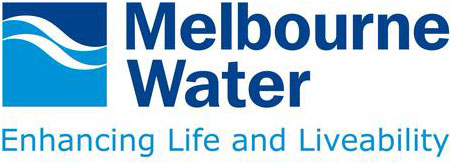resource library
Array
Infrastructure Design Manual - Web View
Infrastructure Design Manual
Melbourne Water
Published: 26 March 2012
Project Overview
The Infrastructure Design Manual is an important tool that regional and rural councils use to require developers to implement best practice urban stormwater management in new developments.
Under Clause 56.07 of the Victorian Planning Provisions, new residential subdivisions should be meeting best practice stormwater management in line with the Best Practice Environmental Management (BPEM) Guidelines published by CSIRO in 1999 (as amended). This can be achieved through the adoption of Water Sensitive Urban Design (WSUD).
In particular, Sections 18 – 20 of the IDM set out the requirements in relation to a range of WSUD options from large scale detention of stormwater to small scale detention systems (e.g. on site detention for multi-unit developments). These standards provide consistency in urban stormwater management and WSUD across the region.
Since its inception by the Cities of Greater Bendigo and Greater Shepparton and the Shire of Campaspe, 33 other councils have adopted and/or are in the process of adopting the IDM as the basis for their infrastructure planning and design (as at March 2012).
Drivers and Objectives
The objectives of the IDM as a whole, which are also applicable to the sections relevant to Water Sensitive Urban Design, are:
- Accountability – each local government, developer, and design consultant is accountable for his/her own designs and should maintain the established design and development standards,
- Collaboration – the most effective solutions to problems can be developed by sharing resources and knowledge,
- Quality – best practice examples can be shared between municipalities to develop a culture of continuous improvement,
- Consistency – the expectations for each municipality are the same so consultants and developers can readily anticipate the requirements and standards, and
- Documentation – to clearly document and communicate a participating council’s requirements for the development of infrastructure.
Organisations
City of Greater Bendigo, City of Greater Shepparton, Shire of Campaspe (Project Initiators)
Project Outcomes
The IDM has given the participating councils a consistent high quality and minimum standard for the development of WSUD and stormwater infrastructure.
The IDM has helped guide significant expenditure and development within the boundaries of the participating councils.
The IDM enables new infrastructure to deliver long term environmental benefits to communities.
The IDM encourages collaboration between participating councils through regular forums where technical issues that arise with the implementation of the standards can be discussed.
Lessons Learnt
The IDM has provided local governments, developers and consultants with a consistent set of clear guidelines for stormwater quality and flood mitigation design. Consistent and clear expectations are important in initial planning, design and budget setting.
Maintenance needs to be considered at the design phase of the project. An ongoing issue with WSUD assets for local government is maintenance. The maintenance regime required for wetlands, swales, etc. can be high, and many regional councils do not have the resources to ensure the long-term success of these assets. In addition, the maintenance regimes are greatly impacted by the quality of construction. Improvements that are being considered for the IDM include sections on improving construction quality in order to minimise ongoing maintenance requirements.
Project Cost
N/A
Timeframe
The IDM was developed and first adopted in October 2007 and is now at Version 3 (Sept 2010). The intention for the IDM is that it evolves with changes in regulations and legislation to remain current and applicable. Version 4 is expected to be released in April 2012.
Contact
Clearwater: 03 9235 5335
